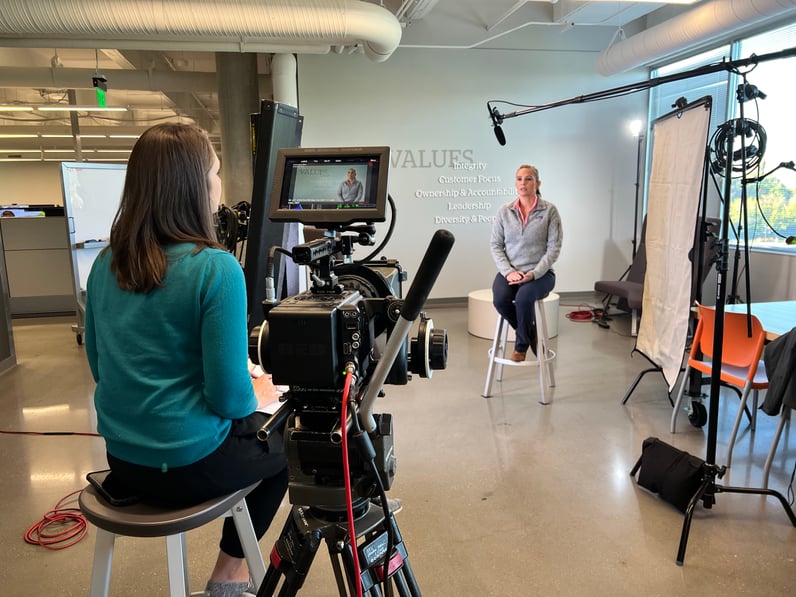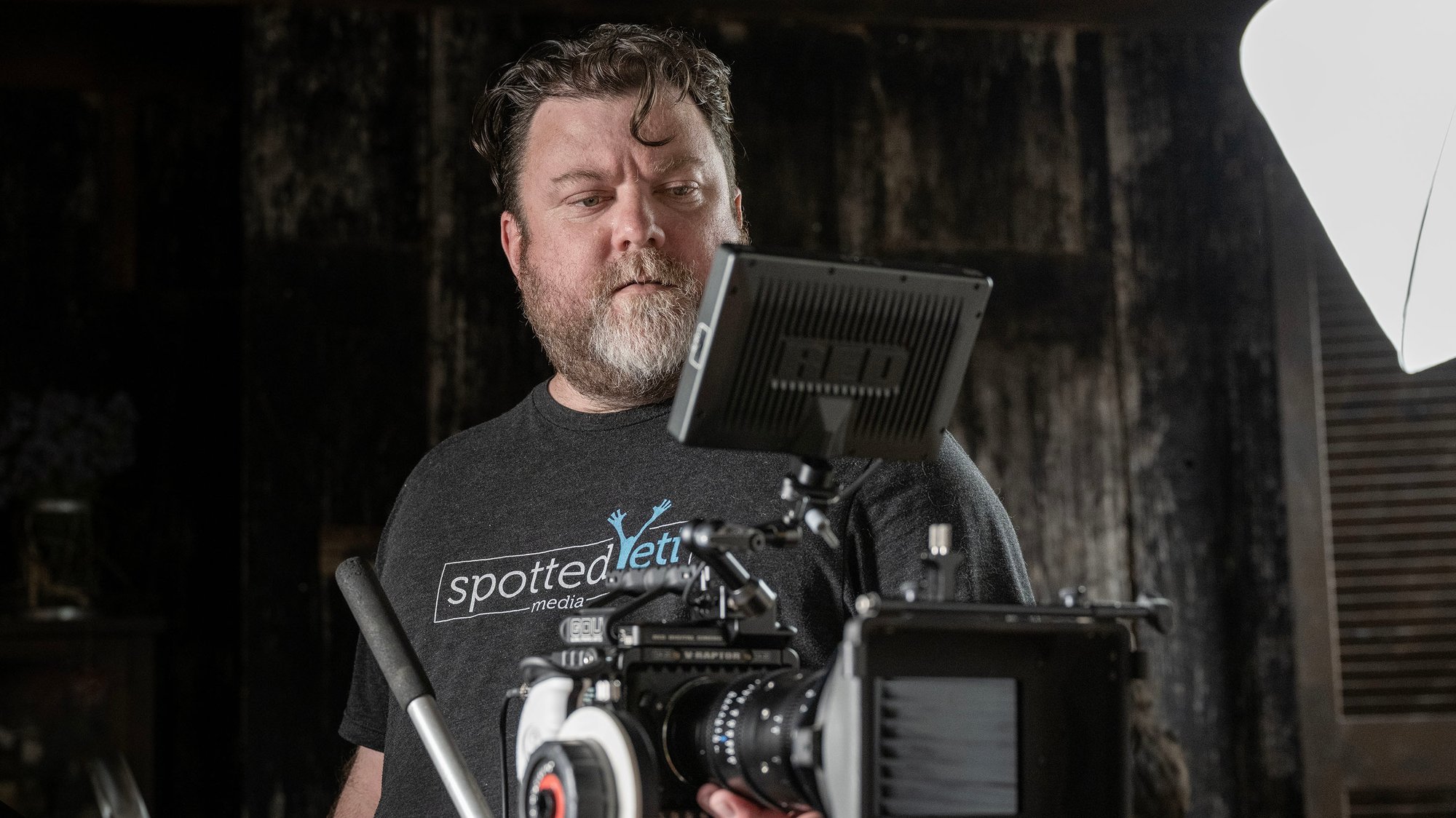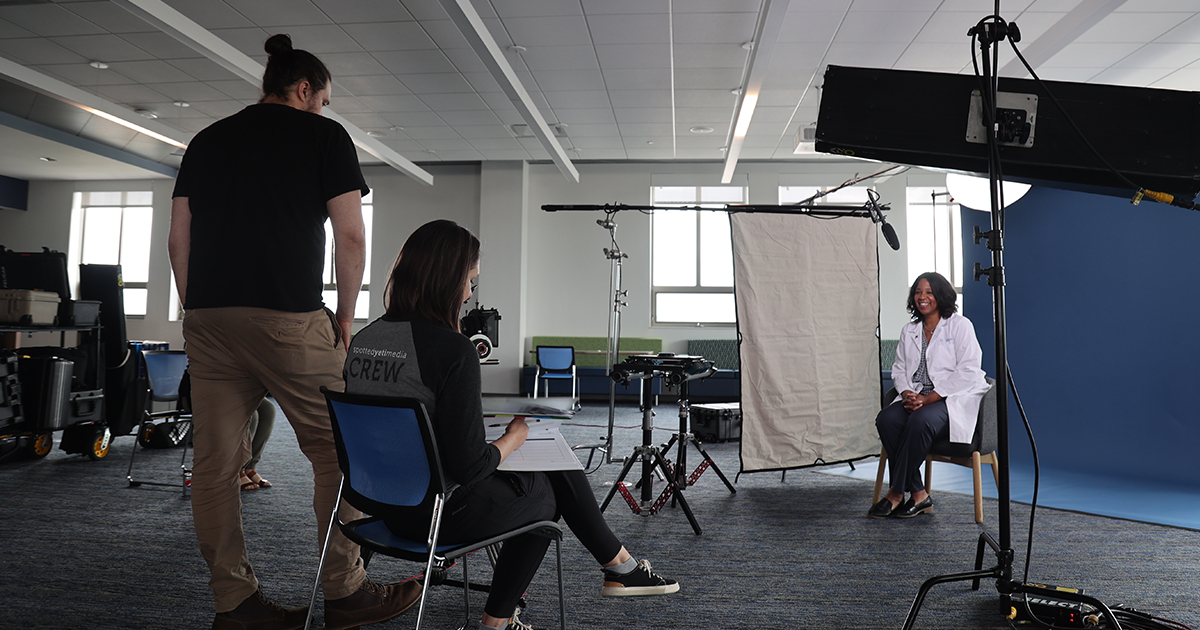To me, the term “editor” is synonymous with “storyteller” because I use unscripted interview content and turn them into stories that audiences watch to be inspired, to learn something new, or to be entertained. These are nonfiction stories of real people in the community who are making a difference. At Spotted Yeti Media we focus on telling these authentic stories and showing the world you exist through video.
There are many great ways to tell a story with video, but for me it all starts to come to life when I get the interview footage from the production crew. I begin every project with the raw interview footage first, and cut the story together from what the subject expressed on camera. By choosing the best parts of the interview I can transform an interview into an emotional piece with a story arch by listening and bringing out the best parts.
Knowing how to interview someone is a skill our producers have perfected over time. Asking the right questions and getting your subject to open up about their experiences can be difficult and it’s important to use the right tactics when posing for an interview.
It All Starts with a Conversation
Many times the interviewee is uncomfortable or nervous to go on camera. The film equipment and people in the room can have an intimidating effect on them, and it looks like an unnatural way to have a conversation --but it doesn’t have to be unnatural. In fact, an important first step in the process is to make sure your subject feels comfortable, and that it is just a conversation between you and them. Providing eye contact, open ended questions, and not interrupting their train of thought are tactics used by our producers that get the best responses in an interview. Anyone can tell a good story if they’re given the right encouragement.

Keeping an Open Dialogue
Make your subject feel more comfortable by asking them easy questions to begin, asking for their name and job description, how they first got involved in the company, etc. These are great warm up questions because they are facts, things the subject doesn’t have to stress over to explain. Once everyone is warmed up you can begin with your list of questions.
By asking open ended questions you keep the subject talking and they will dive into explanations that can lead to telling the story without much help from you. Phrasing such as “Tell me about how you first heard of this nonprofit”, instead of “when did you first hear about this nonprofit?” makes a big difference in getting them to open up about their experiences.
If your subject gets stuck or they are not elaborating enough, start asking them about emotions they experienced. Some people are less expressive than others and having them describe their thoughts or emotions is a good way to dig deeper into the root of the story.
Being a Good Listener
As an interviewer it is important to not interrupt the subject when they are speaking. Allow them to express full thoughts and details of a story by encouraging them with emotive facial expressions instead of interrupting with “oh yeah” or “I agree”. It is important to stay out of the conversation for editing the interview later. By staying engaged with the subject though facial expression they will be encouraged to continue their story and you will have less editing to do afterward.
It is important to never forget that you are there to hear their story, and sometimes it’s not what you might think. To tell a good, or accurate story, you should never lead the subject along with questions that push the narrative you might have in your head. Of course, that can lead to one of the best questions of all -- something like, “Is there anything I haven’t ask you that you’d like to share?” is always a good one. You might find that subject will fill in your storyline better than you can.






Comments
Leave Your Comments